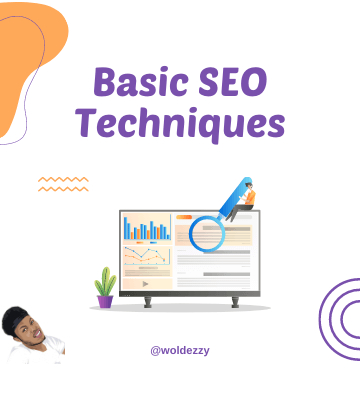To increase your website’s visibility in search engines such as Google, Bing, and Yahoo!, you need to employ search engine optimization (SEO). Because more eyes mean more visitors and possible buyers, it’s an essential aspect of digital marketing. With many of examples, this guide will help even the most inexperienced SEO professionals grasp and apply the fundamentals of search engine optimization.
1. Keyword Research
Identifying Target Keywords
Start by identifying keywords relevant to your content. For instance, if you run a bakery, your keywords might include ‘fresh pastries’, ‘artisan bread’, or ‘best cakes near me’. Tools like Google Keyword Planner can help identify popular search terms in your industry.
Using Keywords Effectively
Once you have your keywords, use them strategically in your website’s content, titles, and meta descriptions. For example, if ‘organic coffee beans’ is a target keyword, a coffee shop could create blog posts like “10 Best Ways to Brew Organic Coffee Beans”.
2. Quality Content Creation
Relevant and Informative Content
Content is king in SEO. Ensure your website has high-quality, relevant, and informative content. If you sell hiking gear, articles like “Essential Gear for Your Next Hiking Adventure” can provide value to your audience while incorporating relevant keywords.
Regular Updates
Regularly update your website with fresh content. This could be through blogs, new product descriptions, or updated service pages. Google favors websites that consistently update their content.
3. Optimizing Website Structure
User-Friendly Design
A well-structured, user-friendly website is crucial. This includes having a clear navigation menu, a mobile-friendly design, and a fast loading speed. A simple, clean design like Apple’s website is a good example.
URL Structure
Use SEO-friendly URLs that are short, descriptive, and include keywords. For instance, www.yourgardenshop.com/best-indoor-plants is better than www.yourgardenshop.com/category123/sub456.
4. On-Page SEO
Title Tags and Meta Descriptions
Each page on your website should have a unique title tag and meta description that includes relevant keywords. For a page about yoga classes, a title tag could be “Beginner Yoga Classes in [City Name] – Find Peace & Flexibility”.
Image Optimization
Use high-quality images and optimize them with descriptive file names and alt text. For example, an image file of a yoga class could be named “beginner-yoga-class-cityname.jpg” with alt text “Beginner Yoga Class in City Name”.
5. Building Backlinks
Quality Over Quantity
Backlinks are links from other websites to yours. Focus on quality over quantity – getting a few links from well-respected websites is better than many from low-quality sites.
Guest Blogging and Partnerships
Guest blogging on reputable sites in your industry or forming partnerships with complementary businesses can help build backlinks. For example, a fitness blogger might guest post on a health supplement website.
6. Utilizing Social Media
Shareable Content
Use social media to share your content and drive traffic to your website. Engaging posts and useful content are more likely to be shared, increasing your website’s visibility.
Linking to Your Website
Make sure your social media profiles include a link to your website. Regularly post updates with links back to your site’s content.
7. Tracking and Analysis
Use Analytics Tools
Use tools like Google Analytics to track your website’s performance. Monitor metrics like traffic sources, bounce rate, and conversion rate to understand what’s working and what’s not.
Adapt Based on Data
Make adjustments based on your analytics data. For instance, if you notice a high bounce rate on a particular page, it might need better content or design.
Conclusion
Basic SEO techniques are all about making your site more visible and attractive to search engines and users. By focusing on keyword research, quality content, website structure, on-page SEO, backlinks, social media presence, and regular tracking, even beginners can improve their website’s search engine rankings. Remember, SEO is a marathon, not a sprint; consistent effort and adaptation to changing trends are key to long-term success.


Leave a Reply